Carbon accounting is a set of methods that measure how much greenhouse gas (GHG) an organization emits. It calculates emissions as a measure of carbon dioxide equivalent (CO2e) units, as a simple way to express the combined impact of CO2 and other greenhouse gases.
Carbon accounting helps organizations quantify the environmental impact of their activities. They can then use this data to identify opportunities for emission reduction across the value chain, thereby staying compliant with environmental regulations and doing their part to combat climate change.
Carbon accounting software enables a streamlined, data-backed approach to carbon accounting for organizations. Below are the carbon accounting platforms based on their advanced AI capabilities, sustainability management, and compliance with global standards.
- Normative.io – AI-Powered Emission Factor Matching
- Supercritical – Carbon Removal Marketplace
- Net0 – Enterprise Sustainability Management
- Credibl – Supports Multiple ESG Frameworks
- PlanA – Best to Reach Net-zero Emissions
- Sweep – Best for Large Enterprises
- Persefoni – AI-Powered Carbon Measurement
- Sphera – Best for Industry-Specific Solutions
- Greenly – Advanced Precision Analysis
- Diligent – Best to GHG Reporting
- Sustain.Life – Best for Sustainability Reporting
- Watershed – Best-In-Class Emissions Measurement
- Show less
Normative.io
AI-Powered Emission Factor Matching
Normative offers a comprehensive approach to achieving net-zero emissions with three main offerings. First, its AI-powered calculation engine connects business emissions data with over 220,000 scientific emissions factors for the most precise insights. Second, its Climate Strategy team offers tailored guidance on emissions reduction from its team of GHG Protocol-certified Climate Strategy Advisors. And third, it connects companies worldwide through the Carbon Network, which offers carbon insights, global emissions data, and partnerships with climate consultants.
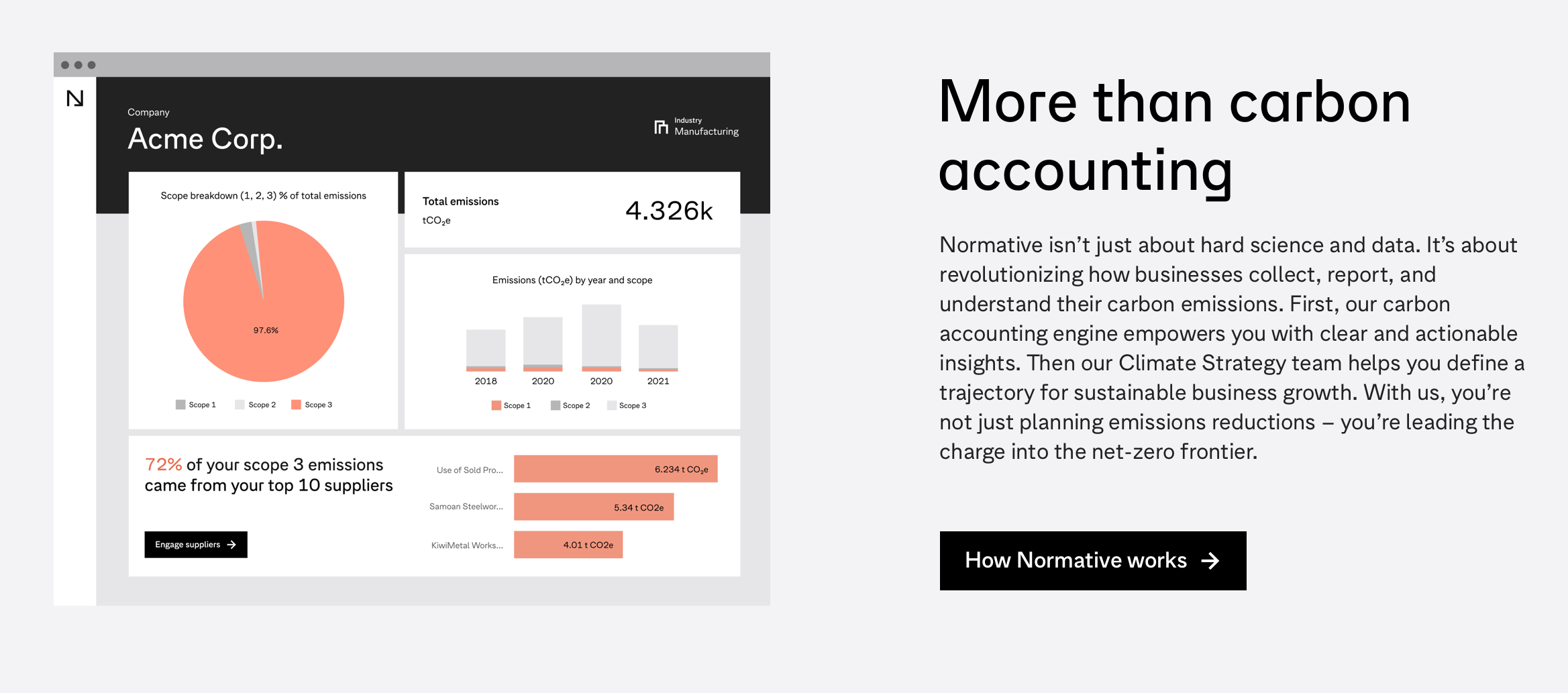
Normative works with a wide range of industries, from hospitality and tech to manufacturing and retail. Going far beyond basic carbon calculations, Normative offers a robust engine to help companies take full control of their emission reduction planning.
Normative Features
- Detailed emissions profile to help companies understand emission hotspots and track progress against their baseline
- Real-time data visualization and automated supplier data collection
- Ability to model future reduction scenarios and build verifiable reduction initiatives
- One-click reporting for seamless disclosure
- Compliant with CSRD, Ecovadis, CDP, STBi, SECR, and multiple other frameworks
Normative Pricing
Normative offers custom pricing for each client.
Supercritical
Carbon Removal Marketplace
Supercritical’s mission is to achieve carbon removal at scale so as to achieve net-zero emissions by 2050. It helps companies navigate the carbon removal market and invest in the options best suited to their budget.
The Supercritical marketplace offers a unified view of live pricing and project availability across five million tonnes of removals. This enables companies to take an informed, data-driven approach to carbon removal, conduct secure transactions, and build portfolios of vetted credits. Every project, moreover, is vetted according to Supercritical’s rigorous protocols covering 118 criteria, so that companies can confidently evaluate different options and build their carbon credit portfolio.

Supercritical Features
- Single dashboard to manage all transactions, deliveries, and credit retirements
- Permanent, high-quality carbon removal projects including direct air capture, enhanced weathering, biochar, and more
- Strict three-stage hierarchical vetting protocol covering carbon market standards, project fundamentals, and full project and site vet — only 18% of vetted projects are passed
- Robust, standardized contracts that mitigate edge cases and unique CDR risks for secure and simplified transactions
- 1/3rd of corporate buyers worldwide invest in carbon removal through the Supercritical marketplace
Supercritical Pricing
Supercritical offers custom pricing for each client.
Net0
Enterprise Sustainability Management
Net0 employs advanced AI to help companies monitor, report, and verify their sustainability performance. It precisely measures the full spectrum of Scope 1, Scope 2, and Scope 3 emissions, calculating against 50,000+ emissions factors and retrieving data via 10,000+ integrations.
With the AI-powered Initiative Finder, companies can explore a wide range of global and local sustainability initiatives, curated to meet their compliance efforts. They can then test the impact of their strategies with the AI-powered simulator, enabling them to optimize their path forward before implementation. With Net0’s comprehensive analytics capabilities, they can keep an accurate count of emissions they have saved or avoided, allowing them to quantify their positive impact on the environment.
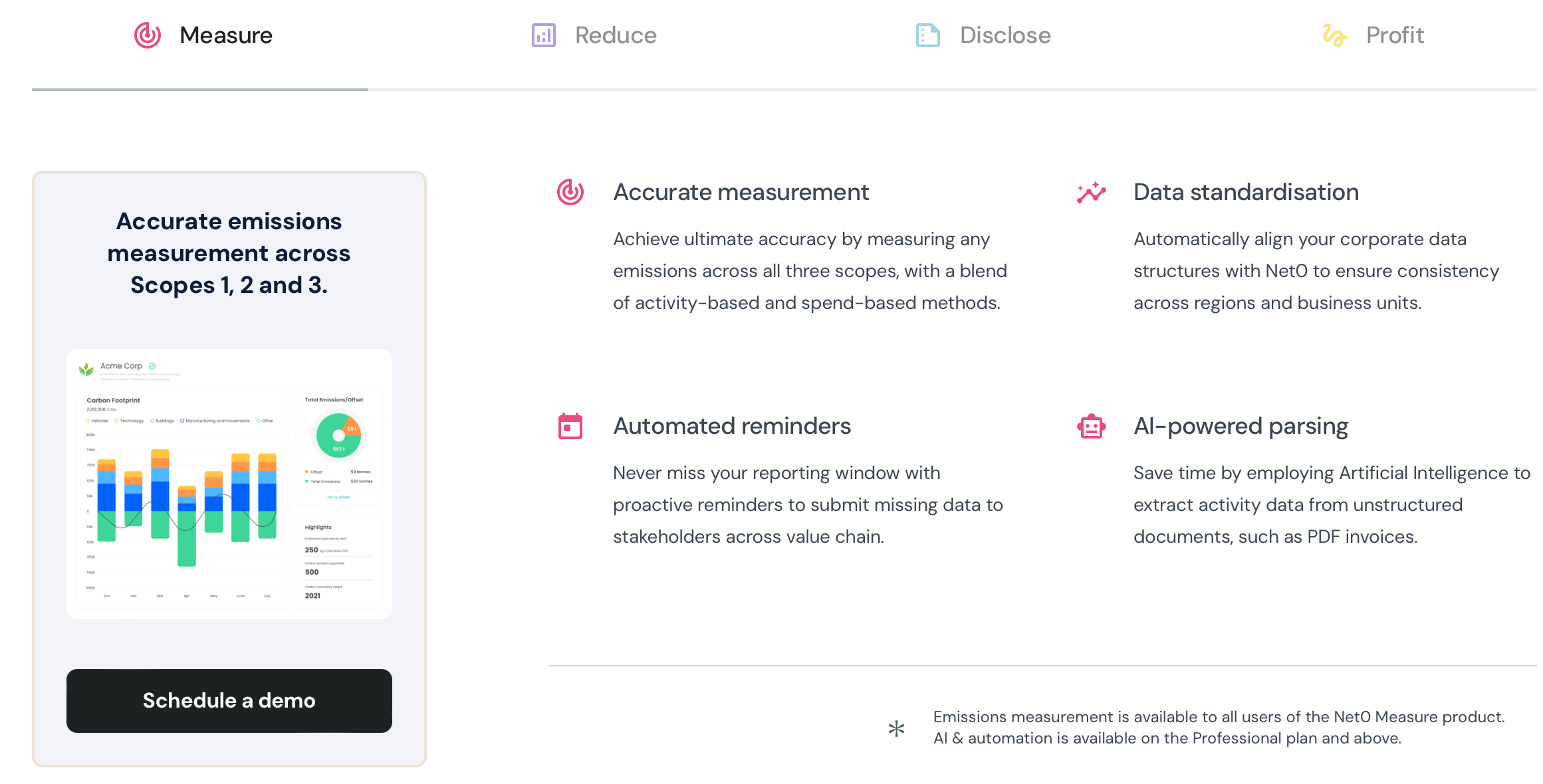
Net0 Features
- A complete and radical solution for enterprise sustainability that leverages advanced AI
- Carbon reporting dashboard that accelerates the reporting process by 80%
- Track progress towards environmental initiatives in real time
- Automated disclosure drafting for all common reporting standards globally
- Compliant with GRI, TCFD, SASB, CDP, SFDR, and other frameworks
- Trusted by over 250 governments and Fortune 500 companies worldwide
Net0 Pricing
- Net0 Base — $4995/month
- Professional — Custom Pricing
- Enterprise — Custom Pricing
Credibl
Supports Multiple ESG Frameworks
Credibl leverages advanced AI to offer comprehensive carbon emission reporting with 99% accuracy. It helps companies visualize emissions patterns by Scope 1, 2, and 3 so as to set the most optimal ESG targets. It also helps analyze Financed Emissions across all asset categories so that companies can craft an action plan specific to each portfolio and asset class.
With Credibl, companies get to construct a granular strategy that their Credit, Risk, and ESG departments can examine and evaluate on a per-loan basis to understand portfolio emissions. Its streamlined approach helps companies enhance data transparency by 85% and save 3000+ man-hours per year.
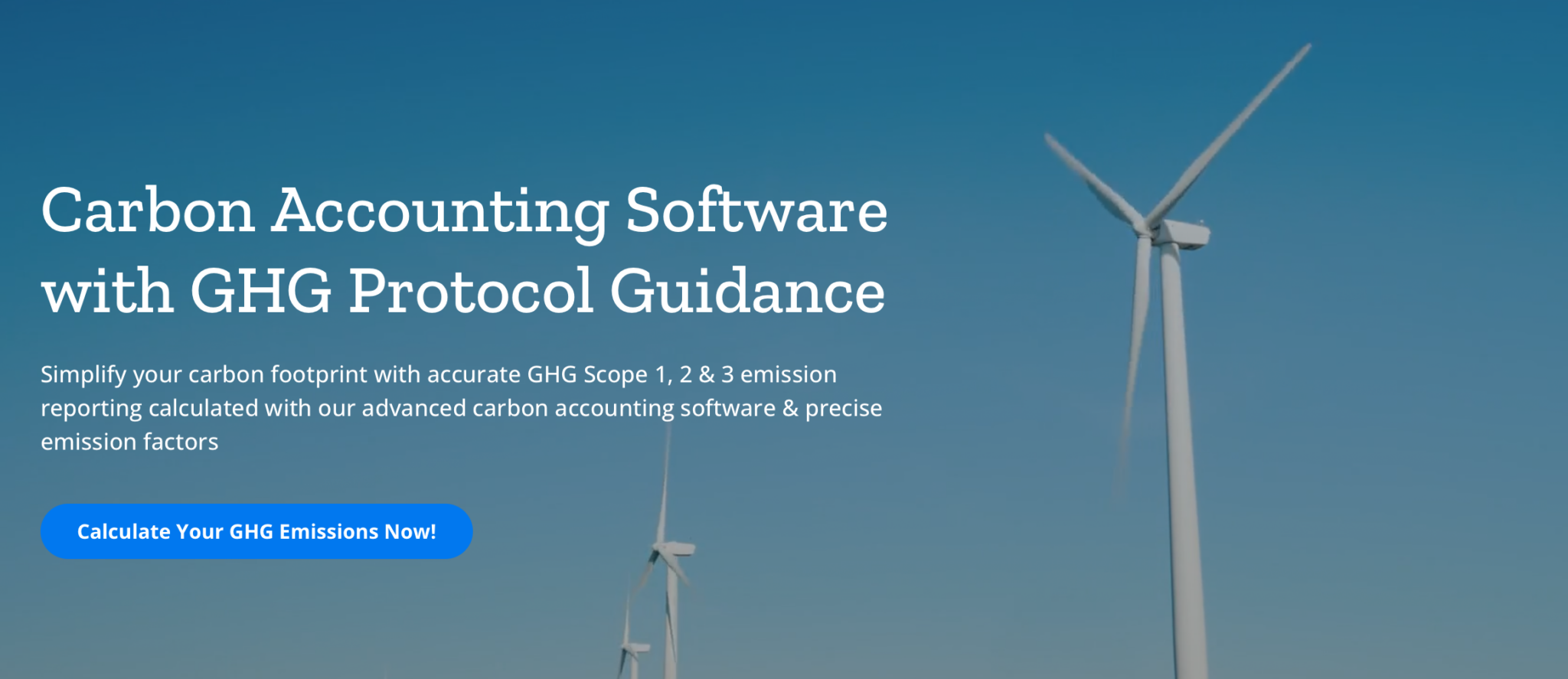
Credibl Features
- Comprehensive carbon accounting software with GHG Protocol guidance
- Carbon footprint calculation with a wide range of global and regional datasets like ISO, EPA, DEFRA etc
- Solutions for a range of industries like BFSI, Manufacturing, Hospitality, and Real Estate
- Compliant with multiple frameworks like TCFD, CSRD, GRI, BRSR, PCAF, CBAM, and more
Credibl Pricing
Credibl offers custom pricing for each client.
PlanA
Best to Reach Net-zero Emissions
PlanA offers companies streamlined carbon footprint assessment and personal support from carbon experts to help them reach net-zero goals. Certified by TUV Rheinland, it offers a customizable dashboard where companies can compare emissions, obtain benchmarks, and pinpoint emissions hotspots to take action on. With PlanA, companies can visualize their carbon footprint across business units and subsidiaries and then set science-based targets for decarbonization.
PlanA supports 1500+ companies worldwide. With step-by-step guidance on crafting an emissions reduction strategy, it is the ideal partner for companies embarking on their CSRD journey.
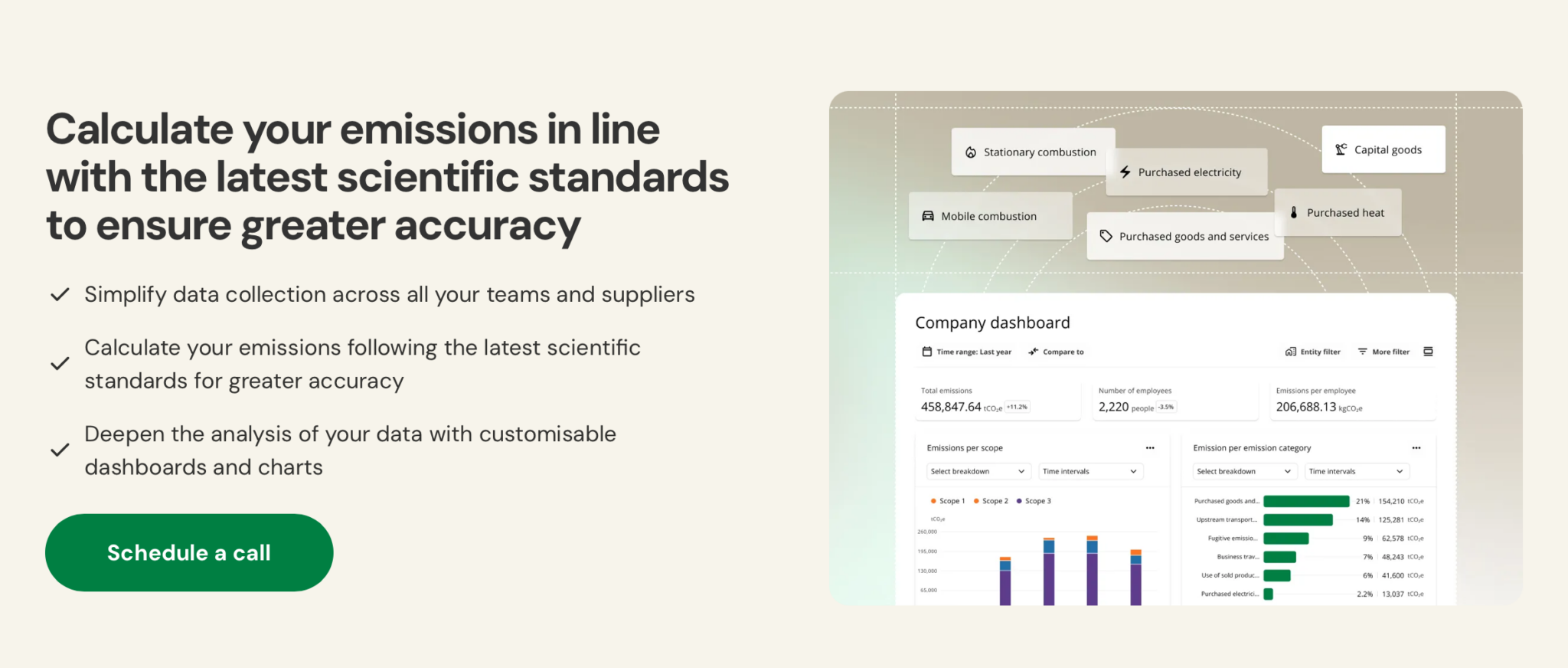
PlanA Features
- Simplified data collection across all teams and suppliers
- Customizable dashboard and charts for richer data analysis
- Personalized services from experts such as reporting readiness assessment or conducting gap analysis
- Ranked in the global top 5% in B Corp “Governance”
PlanA Pricing
PlanA offers 3 plans – Essential, Pro, and Enterprise and the exact pricing is available on request.
Sweep
Best for Large Enterprises
Sweep employs a data-driven approach to help businesses create a single source of truth for emissions data, even in complex business environments. It offers tailored support along the entire emissions reduction journey, from tracking ESG data to implementing goal-based sustainability strategies.
As a leading all-in-one sustainability platform, Sweep has alliances with leading climate organizations like Invest Europe and Climate Dividends. With streamlined data collection and granular guidance for meeting regulatory requirements, Sweep helps companies manage their carbon data up to 45% faster.
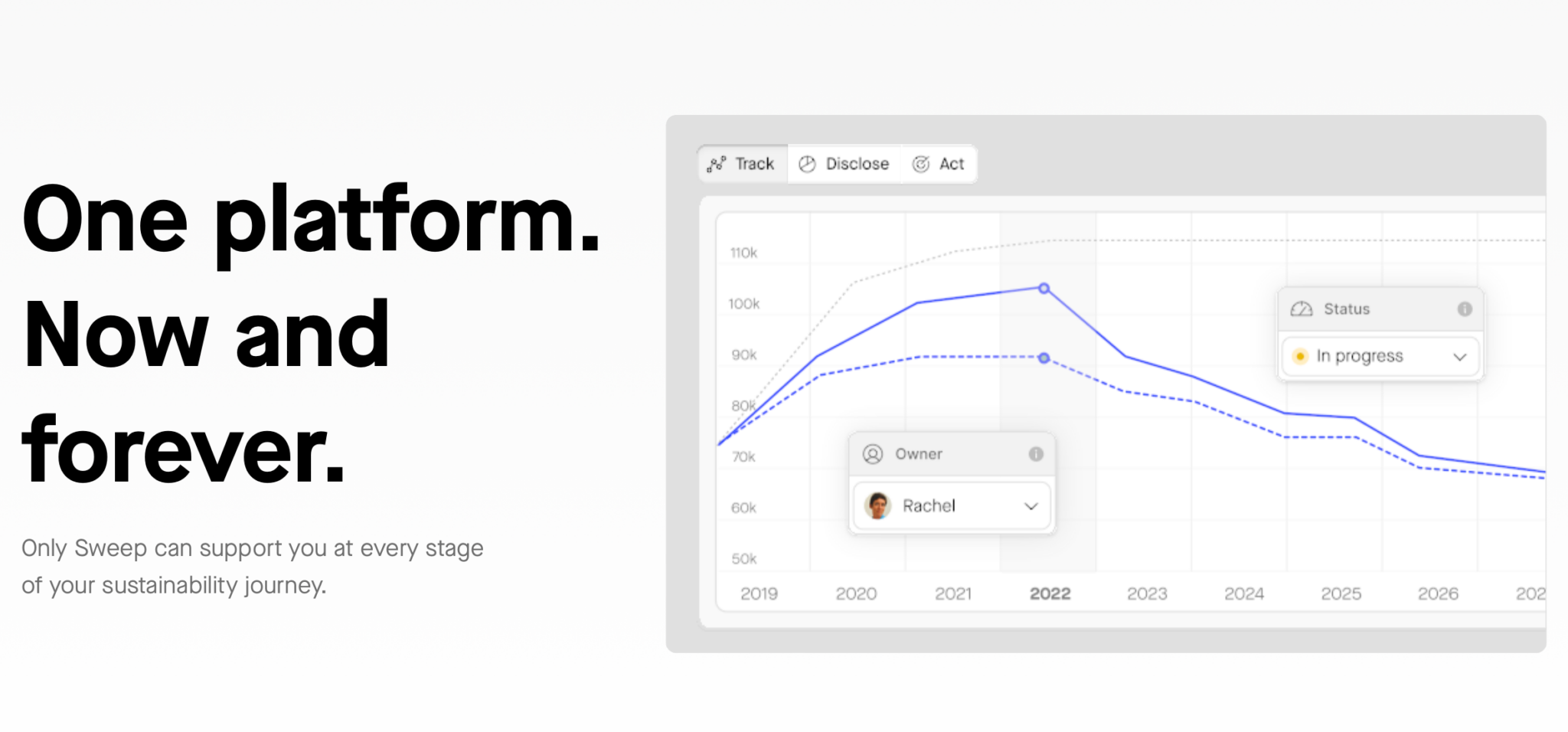
Sweep Features
- AI-powered Scope 1 and 2 data collection to help companies quickly address the most pressing challenges
- All documents and data stored securely on Sweep for a clean audit trail
- Free access to value chain for partner companies
- Tailored solutions for multiple industries like consumer goods, retail, oil and gas, and telecom
- SOC certified and ISO 27001 compliant
- Compliant with international ESG frameworks like SFDR, CDP, PCAF, CSRD, GRI, and more
Sweep Pricing
Sweep offers custom pricing for each client.
Persefoni
AI-Powered Carbon Measurement
Persefoni helps companies develop a comprehensive view of their carbon footprint based on activity and usage data as well as spend-based estimates. As a single source of truth for emissions data, its Footprint Ledger helps companies manage their carbon footprint with the same transparency and precision as their financial data.
Persefoni’s plans come with the natively embedded Persefoni AI, which delivers technical carbon accounting expertise on request in the style of GPT-4. From detecting statistical anomalies to mapping data sources to the appropriate emissions factors, Persefoni AI saves companies significant amounts of time and effort.
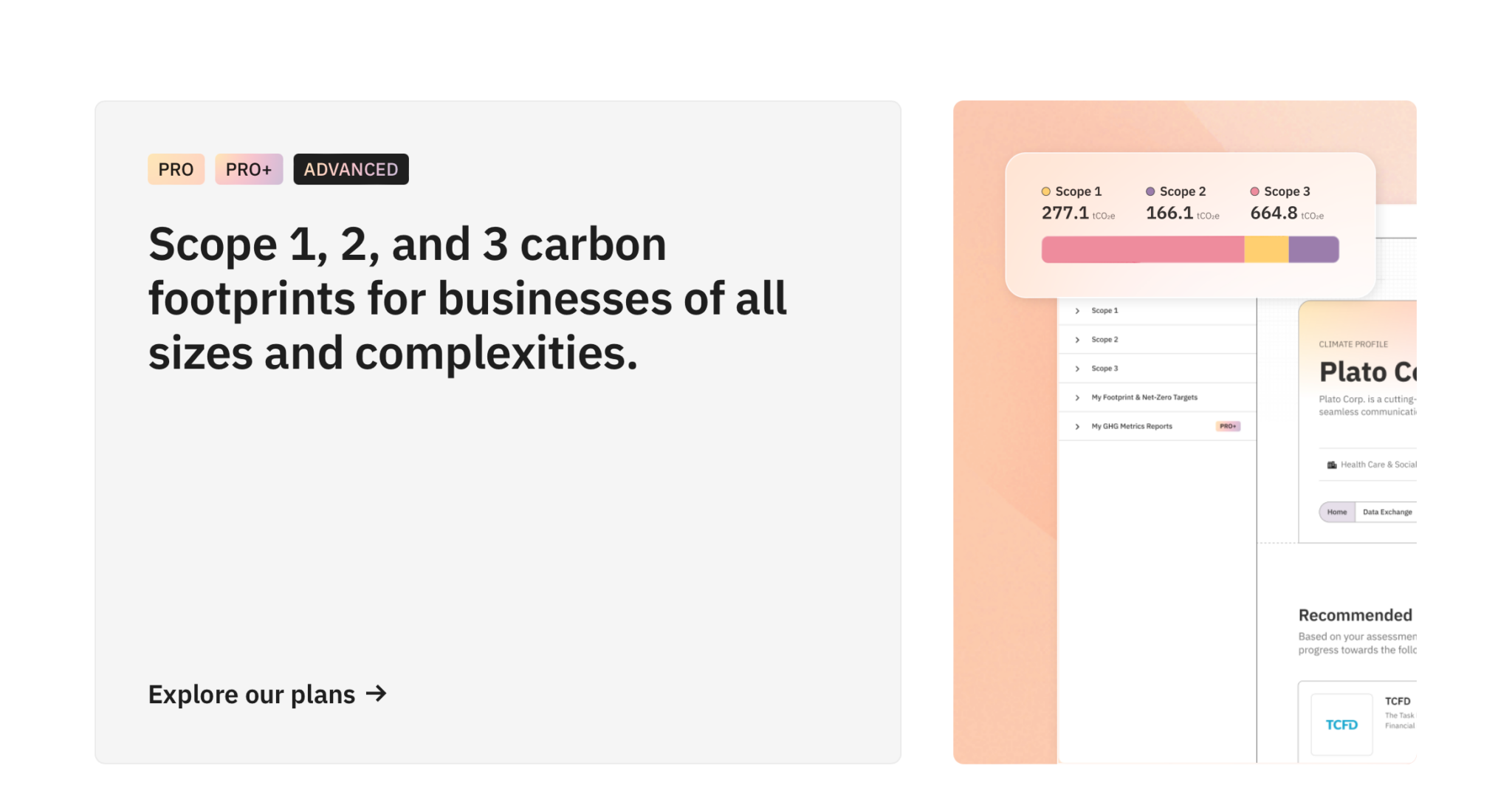
Persefoni Features
- Manage emissions data with the same granularity and control as financial data with the Footprint Ledger
- Scope 3 Data Exchange to request and receive emissions data from suppliers
- Enterprise-grade security with SOC-I and SOC-II certifications
- Compliant with frameworks like TCFD, SASB, Science-based Targets, SEC Climate Disclosure, and more
- Self-service support with Persefoni Academy and Knowledge Base
Persefoni Pricing
- Pro — free
- Advanced — contact sales
Sphera
Best for Industry-Specific Solutions
Sphera offers companies an industry-leading 360-degree view of sustainability at the enterprise, product, and operations levels. Its ESG platform, SpheraCloud, delivers proactive insights on emissions and performance management by aggregating and normalizing real-time data from across the enterprise.
Sphera works with a variety of industries, including Chemicals, Oil & Gas, Hazardous Materials, and others where emissions reduction is particularly critical. Over the span of 30 years, it has served 8400+ customers across 95 countries.
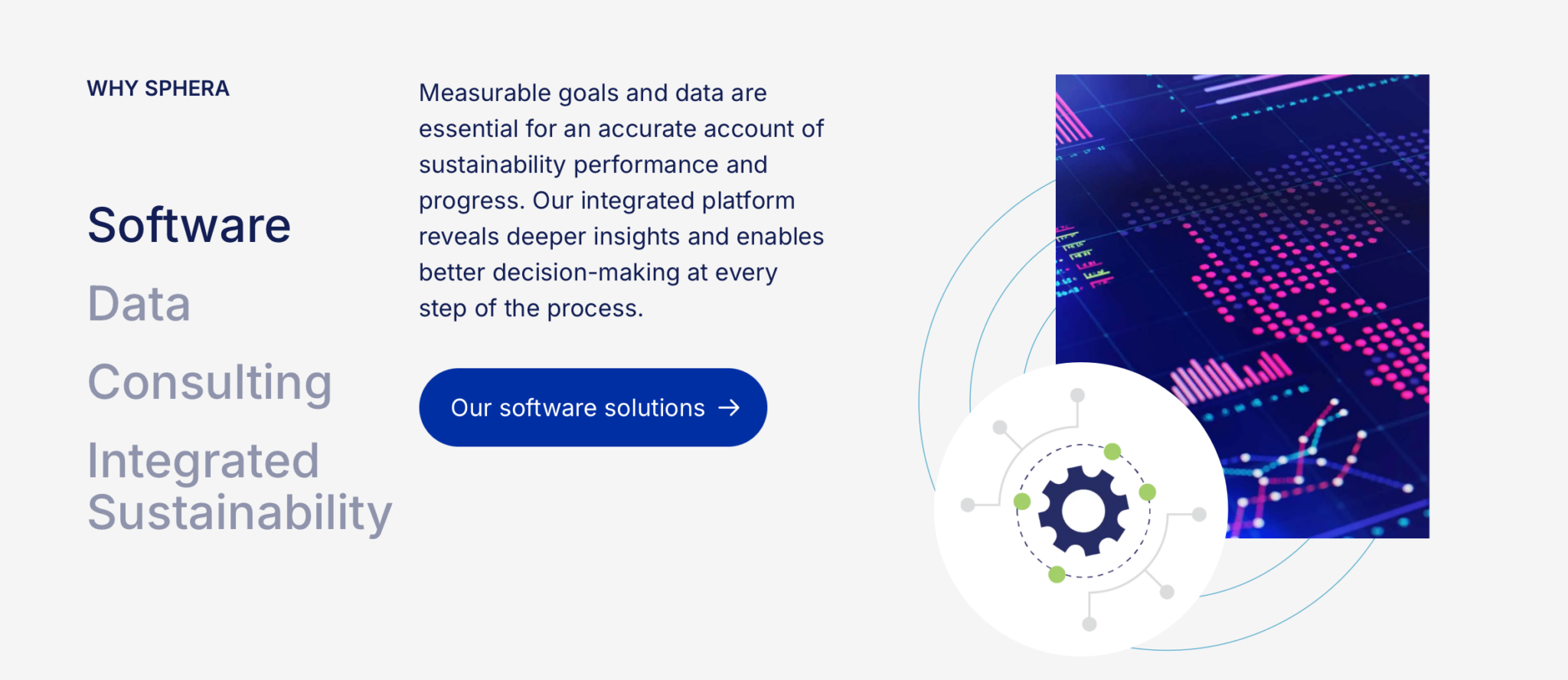
Sphera Features
- Purpose-built SpheraCloud software to support traceable and transparent environmental accounting
- Combination of software, data, and consulting to help companies meet all regulatory reporting requirements
- Calculate air, water, and waste emissions on one consolidated platform
- Emissions calculations based on 20,000+ third-party-verified datasets
- Easy Life Cycle Assessment (LCA) calculations even for non-experts
- Compliant with multiple frameworks including GRI, CDP, TCFD, CSRD, and more
Sphera Pricing
Sphera offers custom pricing for each client.
Greenly
Advanced Precision Analysis
Greenly’s carbon accounting platform helps companies accurately measure their carbon emissions and also contribute towards offsetting them. It offers an easy-to-use customizable dashboard as well as support from human experts to reduce the time spent on carbon accounting by up to 55%.
With Greenly, companies get easy access to strategies to reduce their carbon impact, all of which are consistent with the STBi framework. They can also choose from a diverse portfolio of carbon offsetting projects.
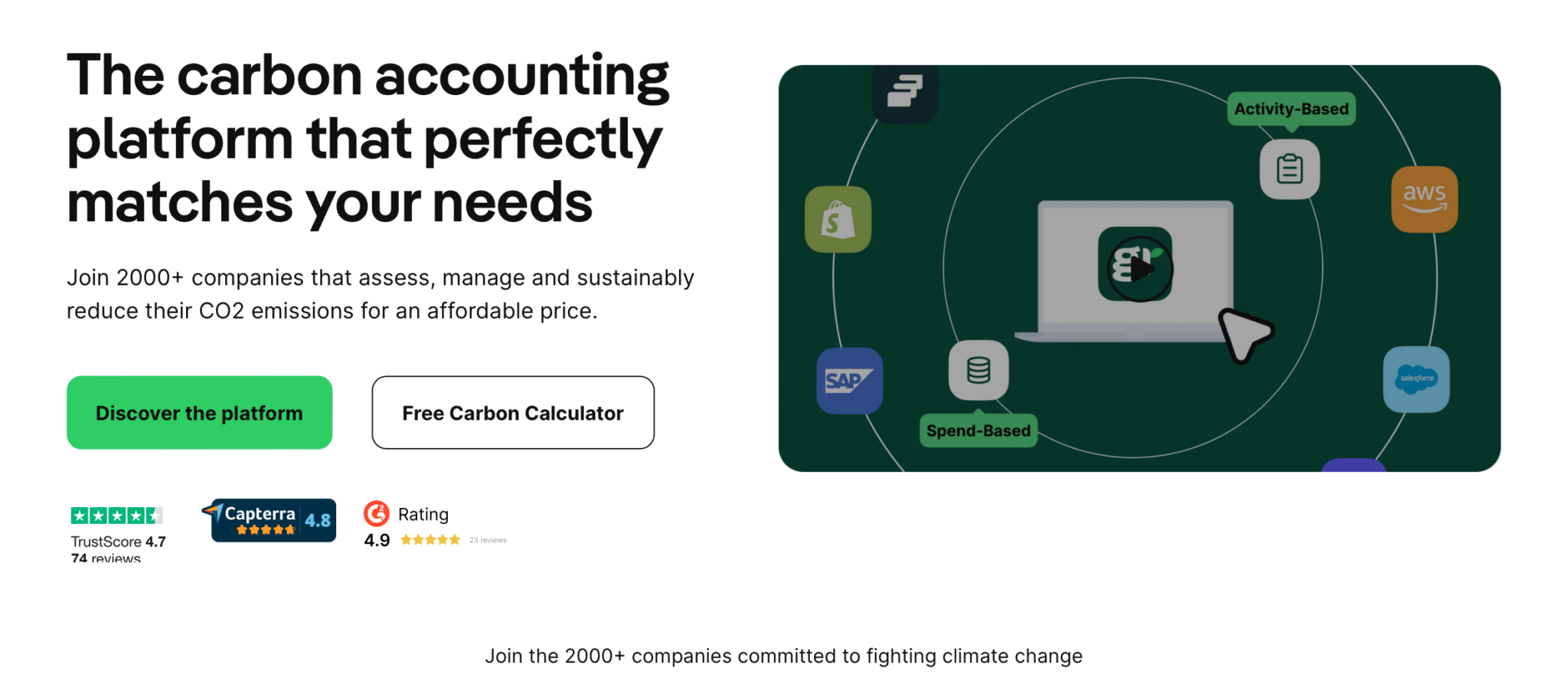
Greenly Features
- Activity-based and spend-based approach to measure Scope 1, 2, and 3 emissions
- In-built simulator for virtual assessment of each possible decision to reduce carbon impact
- Preselected and diverse range of carbon offsetting projects, as well as expert guidance when choosing
- Support with press releases to share environmental efforts
- Compliant with frameworks like CDP, CSRD, Science-based Targets, GHG Protocol, and others
Greenly Pricing
Greenly offers a DIY tool to estimate price based on sector and number of employees.
Diligent
Best to GHG Reporting
Diligent helps organizations seamlessly prepare carbon accounting reports with its automated data collection. With over 2000 activities covering Scope 1, 2, and 3 emissions, as well as 70000+ emission factors, Diligent prepares 100% audit-ready reports with complete calculation transparency and change logs.
Diligent offers a flexible approach to GHG reporting, with a customizable dashboard and 9 methods of data capture for a regularly refreshed database. Moreover, it offers clients the fastest onboarding experience in the sector.
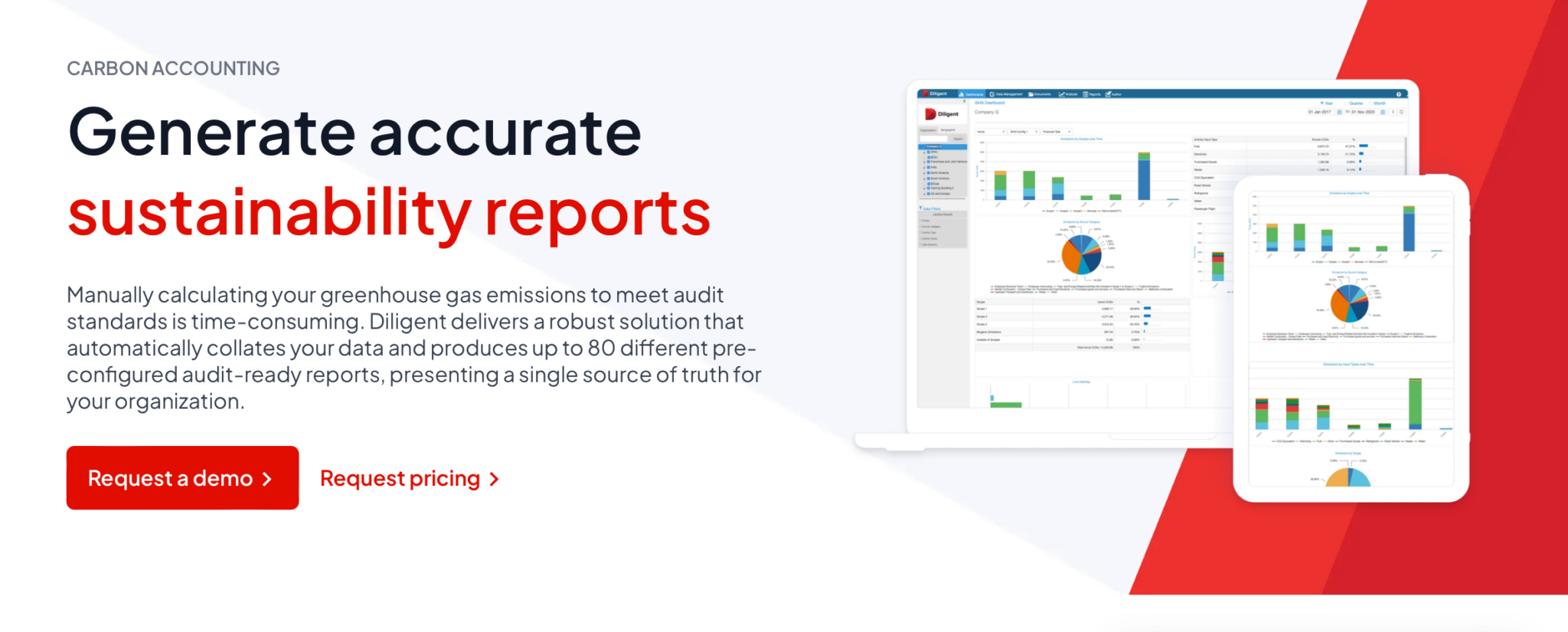
Diligent Features
- Automatically collects data and prepares up to 80 pre-configured, audit-ready reports
- Full calculation transparency and change logs with third-party-certified calculations
- Customizable dashboard to reflect business needs, with visual storyboards and dashboards for executives to study emissions data in an easily digestible format
- ACL Analytics with automation capabilities for audit and control testing
- Certified by frameworks like SASB, DJSI, GRESB, CDP, and GRI
Diligent Pricing
Diligent offers custom pricing for each client.
Sustain.Life
Best for Sustainability Reporting
Recently acquired by Workiva, Sustain.Life offers the most comprehensive high-touch carbon accounting tool to measure, manage, and report carbon emissions. Organizations can study and score their entire supply chain to calculate Scope 3 emissions, and then either set realistic reduction goals or purchase carbon offsets from verified projects for unavoidable emissions.
Sustain.Life helps companies set science-based targets and monitors performance trends against pathways like business-as-usual versus 1.5 degrees Celsius — the limit to which global warming must be contained to avoid catastrophic consequences. From simulating climate scenarios to purchasing carbon offsets, Sustain.Life helps companies streamline their corporate sustainability and make business decisions with the environment always in mind.
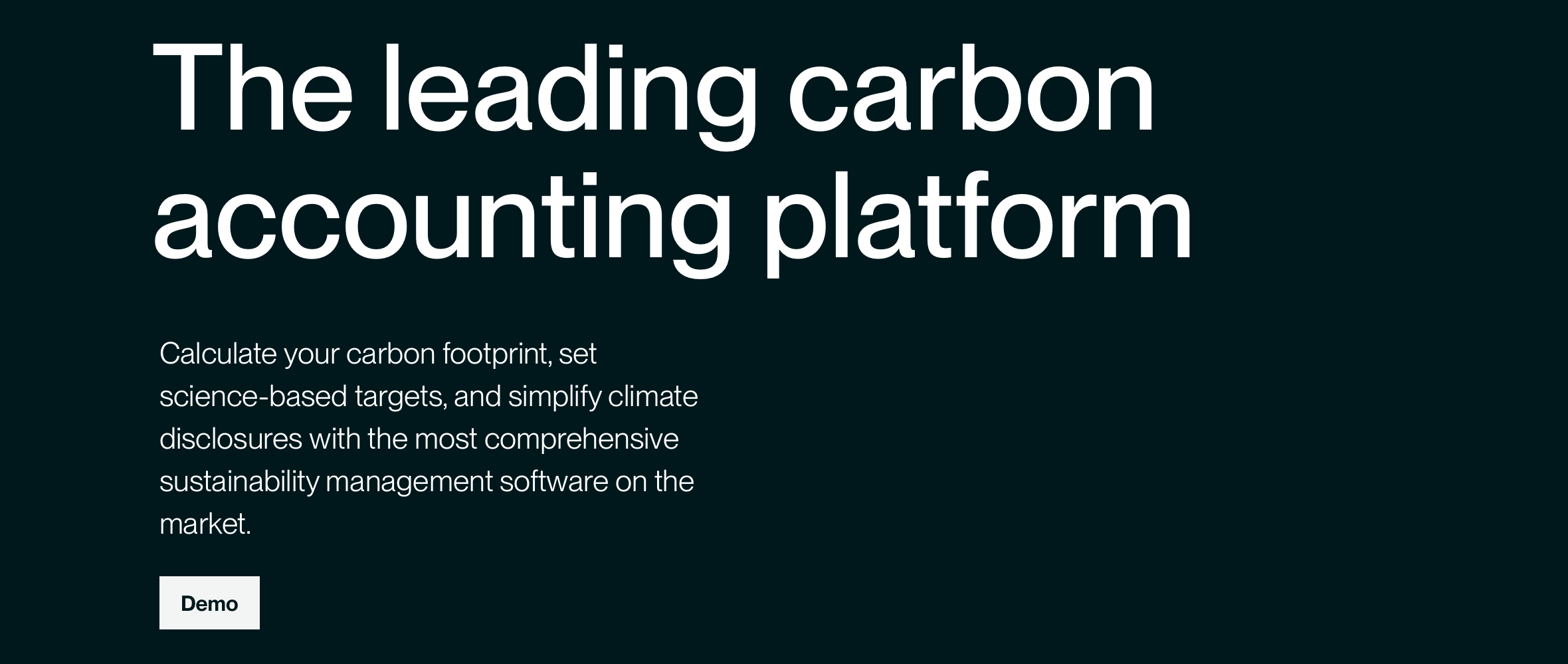
Sustain.Life Features
- Carbon calculators with thousands of externally validated emissions factors from 240+ countries
- Seamlessly customizable ESG data management with uploads, notes, and tags
- Customizable GHG visualizations and data templates
- 24/7 help center with step-by-step guides and community support, along with a dedicated customer success manager included with every plan
- Calculate emissions in as little as two days
- Certified B Corp, compliant with GRI, CDP, and United Nations Global Compact
Sustain.Life Pricing
Sustain.Life offers custom pricing for each client.
Watershed
Best-In-Class Emissions Measurement
Watershed offers comprehensive emissions measurement to accelerate each organization’s sustainability efforts. It offers streamlined data collection with over 60 pre-built integrations, and its proprietary carbon data engine automatically detects and fills any gaps.
Watershed has its own emissions database called CEDA (Comprehensive Environmental Data Archive), including 60000 emission factors from 400 industries covering 95% of the world’s GDP. This makes it easy to accurately calculate Scope 3 emissions, including the impact of global trade and production.
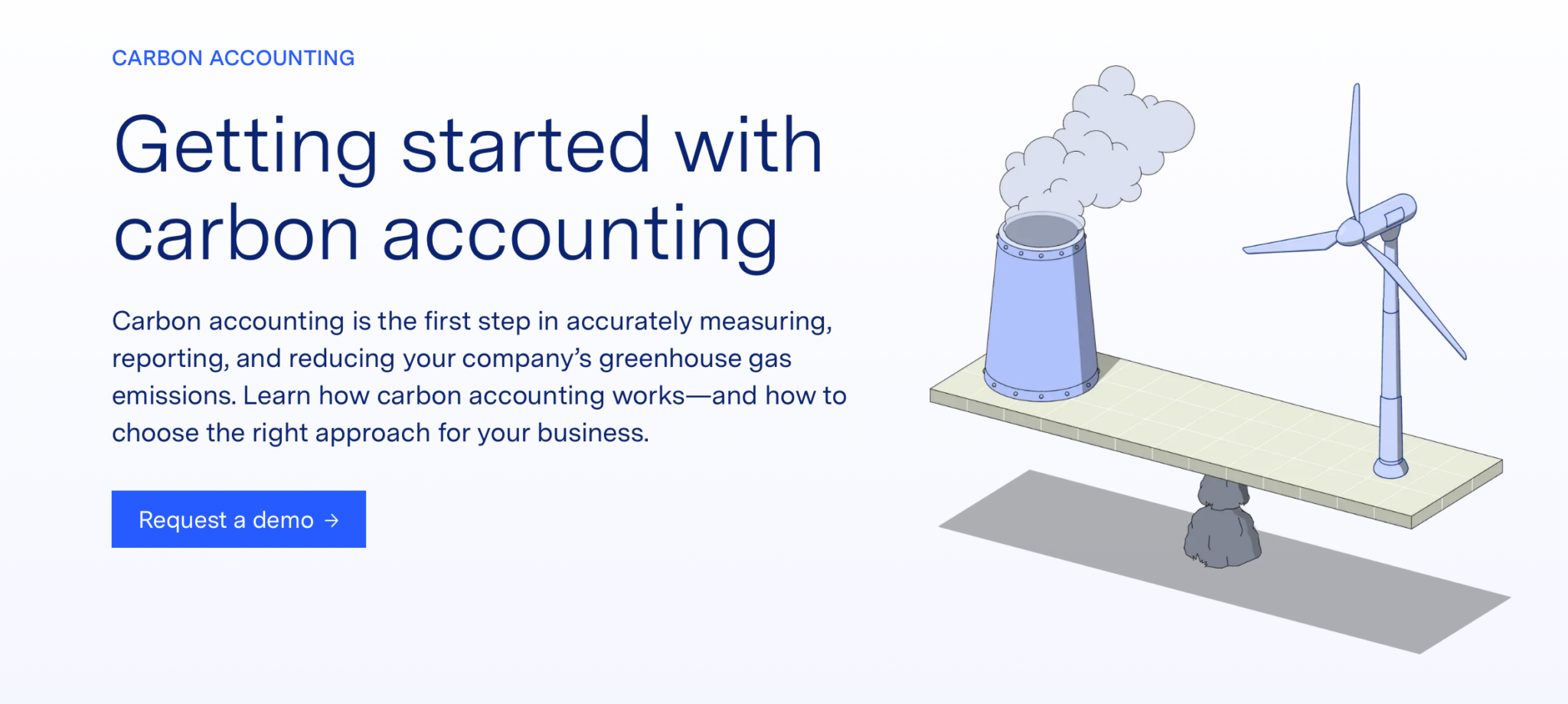
Watershed Features
- Comprehensive carbon accounting support for both small and large companies
- Embedded project management tools to gather data from different departments
- Integrated supplier engagement for those looking to cut down on Scope 3 emissions
- Integrated climate reporting with Watershed Disclosures, a tool that automatically formats data to meet different regulatory requirements
- Enterprise-grade security and full audit trails for all carbon data
- Compliant with frameworks like TCFD, CDP, SECR, STBi, and more
Watershed Pricing
Watershed offers custom pricing for each client.
What Is Carbon Accounting?
Carbon accounting is the systematic process of identifying and quantifying greenhouse gas emissions from an organization’s activities. Done correctly, carbon accounting helps organizations see exactly what their climate impact looks like, and thus be more intentional about resource usage and decarbonization.
Carbon accounting classifies GHG-emitting activities into three categories, known as scopes. In descending order of priority, they are as given below.
- Scope 1 — Direct emissions from fossil fuel burning activities that are directly under the organization’s control, such as manufacturing equipment that runs on diesel.
- Scope 2 — Indirect emissions from the energy purchased by an organization, such as electricity from a power plant.
- Scope 3 — Indirect emissions from the organization’s other purchases (such as leased commercial space or employee commuting) and external activities (such as the use or disposal of its sold products).
What Is Carbon Accounting Software?
Carbon accounting software is a platform designed to help companies track, measure, and manage their carbon footprint across business activities. By automating data collection and analysis, carbon accounting solutions help companies measure their GHG emissions precisely, identify emissions hotspots, take informed decisions to improve efficiency, and stay compliant with environmental standards.
What Are the Benefits of Carbon Accounting Software?
Carbon accounting software helps companies reduce costs, launch emissions reduction schemes, and enhance brand goodwill. Some benefits of carbon accounting software are given below.
- Automated Data Collection — The best carbon accounting platforms have a unified workflow that automatically collects data across multiple emissions sources.
- Streamlined Calculations — Carbon accounting platforms are powered by algorithms that match emissions data with a standardized set of factors to prepare accurate, easy-to-interpret results.
- Centralized Data Management — With carbon accounting tools, businesses can see exactly what their emissions patterns look like through a customizable dashboard.
- Improved Decision-Making — By quantifying the climate impact of their activities, carbon accounting platforms can help organizations identify and prioritize emissions reduction opportunities along their value chain. They can then set reduction goals and track their progress systematically.
- Compliance with Regulations and Standards — Around the world, regulators are requiring that businesses disclose their carbon emissions as per local standards. Carbon accounting software prepares standardized reports with all relevant data, helping businesses stay compliant.
- Demonstrate Environmental Commitment — Today, 77% of consumers believe it is important for a brand to have sustainable practices[1]. With carbon accounting software, businesses can start actioning carbon reduction initiatives and thus demonstrate their commitment to fighting climate change.
- Attract Green Investment — Businesses that have a structured approach to reducing emissions are much likelier to attract green investment, allowing them to further expand their carbon reduction initiatives.
What Are the Different Carbon Accounting Methods?
Below are tried-and-tested techniques employed by leading carbon accounting tools, especially to incorporate the full scope of carbon emissions from indirect Scope 2 and Scope 3 sources.
- Physical-unit method — This is one of the most popular carbon accounting methods. It involves measuring the number of physical units of the organization’s emission-generating activities, such as liters of gasoline burned or kWh of electricity used.
- Spend-based method — This method of carbon accounting multiplies the financial value of a purchased product with the associated emissions factor, measured as the quantity of GHG emissions per currency unit.
- Supplier-specific method — This involves collecting end-to-end GHG inventory data for each product from its supplier. It offers the highest degree of reporting accuracy, especially for Scope 3 emissions.
- Average-data method — This method approximates emissions by compiling data about resources consumed and activities undertaken and then applying secondary emission factors, like industry averages.
- Hybrid method — This method combines supplier-specific data with secondary data. It’s a flexible method that can be adapted to different levels of data quality and availability.
References
Click to expand
More on ESG
-
 EditorUsha, the editor-in-chief of Geekflare, is a tech-savvy and experienced marketer with a Master’s degree in Computer Applications. She has over a decade of experience in the tech industry, starting as a software engineer and then moving into digital marketing and team management.
EditorUsha, the editor-in-chief of Geekflare, is a tech-savvy and experienced marketer with a Master’s degree in Computer Applications. She has over a decade of experience in the tech industry, starting as a software engineer and then moving into digital marketing and team management.


